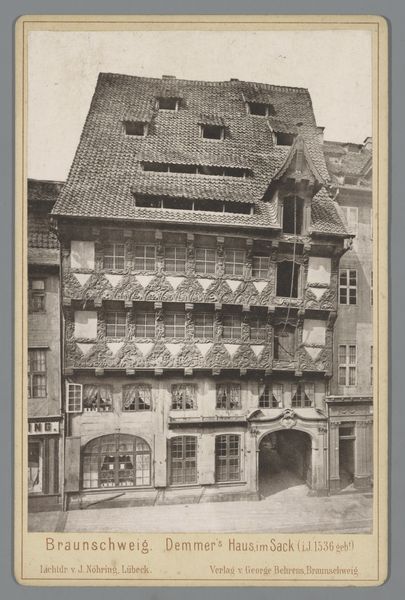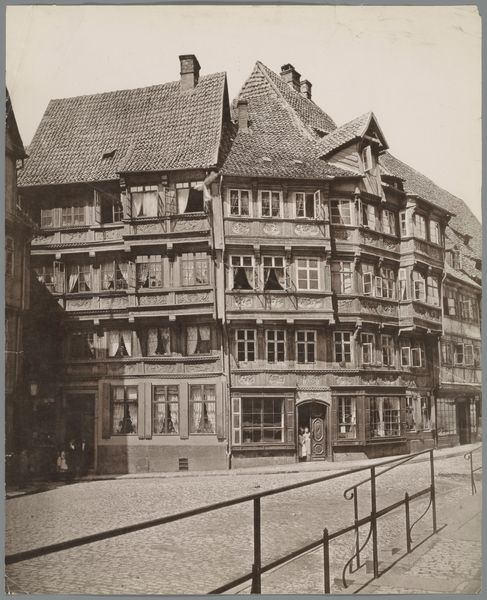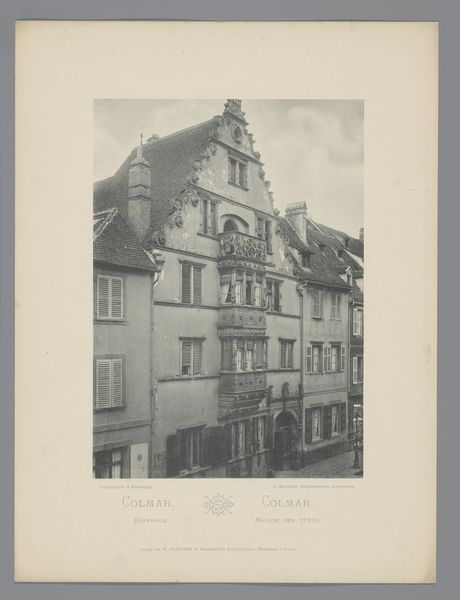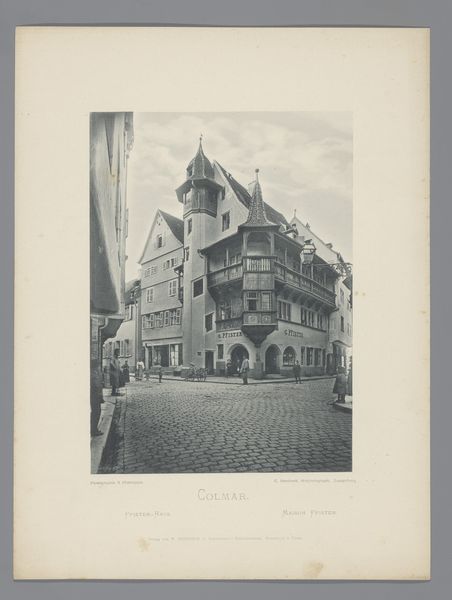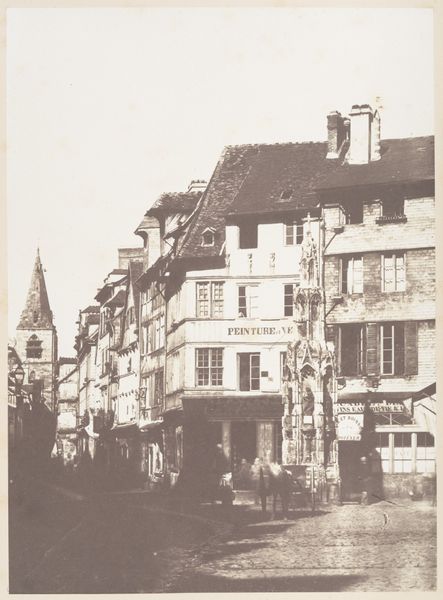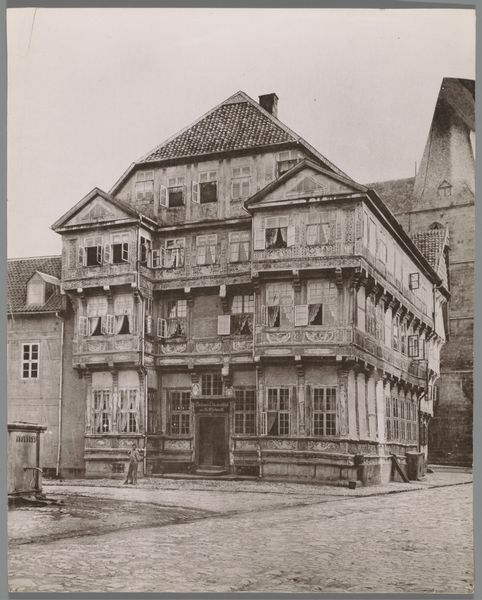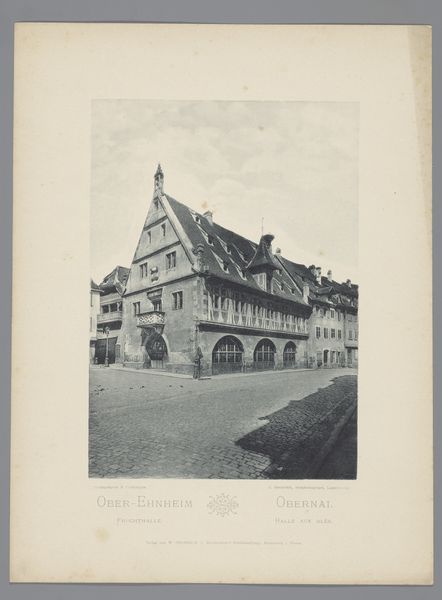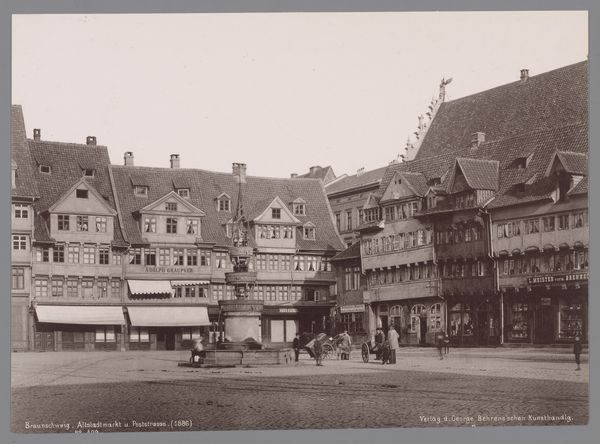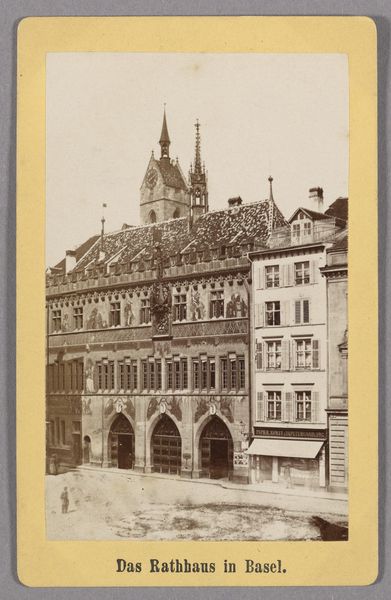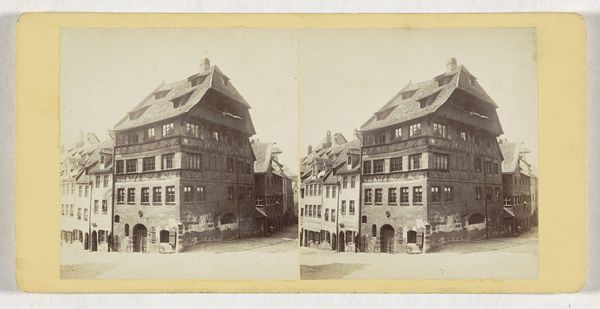
#
aged paper
#
toned paper
#
yellowing background
#
photo restoration
#
parchment
#
old engraving style
#
old-timey
#
golden font
#
watercolor
#
historical font
#
building
Dimensions: height 141 mm, width 97 mm
Copyright: Rijks Museum: Open Domain
Editor: We're looking at "Woonhuis en atelier van Albrecht Dürer in Neurenberg," a photograph dating from around 1860-1890, housed at the Rijksmuseum. It's striking how the aged paper gives it this almost ghostly quality, a tangible connection to the past. What do you see in this piece that speaks to its historical context? Curator: For me, this image goes beyond simply documenting a building; it invites a consideration of artistic legacy and its entanglement with social and economic structures. Dürer, during his time, navigated the complex landscape of patronage, production, and burgeoning art markets. This photograph, taken centuries later, signifies a cultural interest in preserving and celebrating that legacy, a legacy intrinsically linked to Dürer’s identity as a successful, white, male artist. Editor: That's fascinating. It highlights how even architectural photographs can be viewed through a critical lens. Curator: Exactly. Think about whose stories are being told and whose are being left out. The choice to immortalize Dürer’s house, implicitly upholds the value we place on individual genius, potentially overshadowing the collective labor involved in creating art and architecture. Editor: So, you're saying the act of preserving and presenting this particular house reinforces certain power structures within the art world? Curator: Precisely. And we have to consider the historical moment this photograph was taken – the 19th century was a period of intense nationalism and hero-worship. Does the photograph merely depict a building, or does it actively participate in constructing a specific national artistic identity? Editor: I hadn't considered that aspect. Looking at it now, the photograph feels less like a neutral record and more like a deliberate act of cultural preservation. Curator: Right, which prompts questions about the role of museums and art history in perpetuating specific narratives. What kind of stories do we continue to tell? Editor: This really gives me a lot to think about – how deeply intertwined art is with identity, power and the politics of representation. Thank you. Curator: My pleasure. Examining these connections can open up new ways to interpret art and its function in the world around us.
Comments
No comments
Be the first to comment and join the conversation on the ultimate creative platform.
